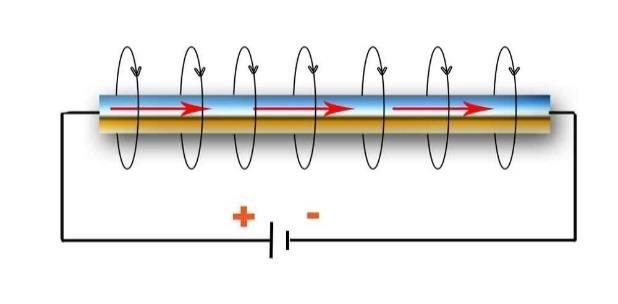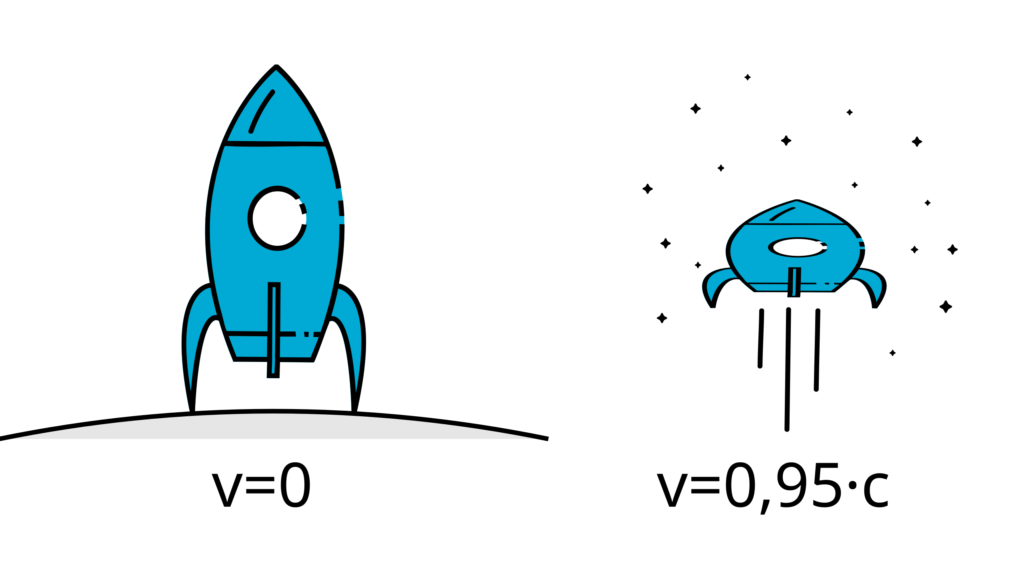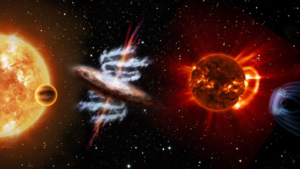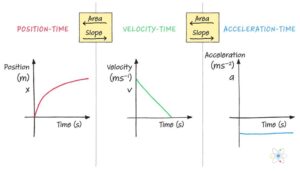Have you ever wondered how something as simple as motion can create a force field? How can the movement of tiny particles lead to the powerful magnetic fields that influence everything from your smartphone to the entire galaxy? The answer lies in Einstein’s groundbreaking theory of relativity. In this article, we’ll unravel the fascinating connection between motion and magnetic fields, and explore how relativity reveals the hidden mechanics behind this extraordinary phenomenon. Buckle up, because we’re about to journey through the intriguing world of physics where motion truly creates magic.
Special Relativity and length contraction
Think of a current-carrying wire. When you bring a magnetic needle close to it, the needle deflects. General science says this happens because moving charges create a magnetic field. But what if I told you this can be explained without invoking magnetic fields directly?

Imagine placing a negative charge next to a current-carrying wire. The wire appears neutral because it has an equal number of electrons and protons. However, from the perspective of the negative charge (let’s assume the net speed is 0 for convenience), things change when current flows through the wire.
In the wire, electrons move while protons are stationary. To understand the force on the negative charge, switch to its reference frame. Here, the electrons in the wire appear stationary, and the protons seem to move backward because the electrons are moving forward. This shift in reference frames moves us from Newtonian mechanics to special relativity.
Role of Lorentz length contraction
When objects move at a significant fraction of the speed of light, the length of the object traveling at that speed contracts or shrinks, ensuring that the speed of light remains constant in all reference frames. This happens when the object is in motion from the perspective of the observer. Hence, the protons are in motion relative to the negative charge, which is stationary relative to the electrons (because the net speed is 0 between the negative charge and electrons in the wire), causing a contraction.
As the protons appear to move , their movement will cause a contraction of the wire/conductor, because of this contraction the charge density changes, making the wire seem positively charged from the perspective of the stationary electrons. This creates an attractive force on the negative charge placed nearby. At normal speeds, this effect is negligible, and the protons are also not moving that fast. It is also negligible in this situation, but there are so many protons! that this causes an actual effect on the charge of the conductor.

This is how special relativity and Lorentz length contraction explain the magnetic field generated by moving charges, providing a deeper understanding of the forces at play.
Time Dilation
Another interesting phenomenon occurs when two electrons are moving together. Traditionally, you would expect them to instantly repel each other, but experimentally, this repulsion is slower than expected. From the lab reference, this phenomenon is called time dilation, which says that when something is moving relative to you, their clocks move slower relative to you. For example, someone moving at a high speed performing an action like waving hello (this effect is negligible at everyday speeds) would seem like a slow-motion hello to you because they are moving relative to you. Therefore, from our lab reference frame, as the electrons are in motion relative to us, this repulsion seems slower because of the time dilation phenomenon.

Practical examples of time dilation
- Airplane – When an airplane is flying at high speeds, the clocks on the plane are moving relative to the clocks on the ground. According to special relativity, the clock on the moving airplane will tick more slowly compared to a clock on the ground because the plane is in motion relative to the reference frame from the ground. This effect is more noticeable at higher speeds, but even commercial airliners, which travel much slower than the speed of light, experience measurable time dilation
2. GPS – GPS Satellite move at very high speeds in space of about 14,000 km/h .Hence according to time dilation , the satellite from earths reference frame is in motion , so the satellites clock will move slower than those on earth . This time dilation effect causes the satellite clocks to lose about 7 microseconds per day relative to ground clocks. To solve this before launch, the frequency of the satellite’s atomic clocks is adjusted to run slightly faster by a factor to counteract the combined relativistic effects.
Conclusion
In conclusion, this provides a new outlook on magnetic fields and the attraction and repulsion of charges, and the role of relativity in creating a daily life example of one of the most unique phenomena. It also provides answers in terms of a current-carrying wire and highlights the crucial role played by Einstein’s relativity in our daily lives, demonstrating the power and elegance of special relativity. The interplay of electric currents, magnetic fields, and relativistic effects reveals the incredible consistency of physical laws across different reference frames. Whether in the deflection of a magnetic needle near a wire or the subtle effects of time dilation, these phenomena highlight the fascinating ways in which the universe operates. This deepens our understanding of the universe, providing an outlook on the complexities of physics while also highlighting its strange nature. This opens doors to more questions and unleashes further curiosity.
Would love to hear your opinions about this in the comments




Great job on providing a comprehensive and insightful analysis! The author has explained the concept of relativity in simple language that it successfully sparks curiosity and deepens our understanding of the complexities of physics. I would like to read such more insightful articles from you on various topics of physics.
thank you
Pingback: Predicting Motion of an object Using Calculus | Science Snap
Pingback: Time Travel: Fact or Fiction? | Science Snap